You are here
Federal Deficit and Debt: August 2022
Every month the U.S. Treasury releases data on the federal budget, including the current deficit. The following contains budget data for August 2022, which was the eleventh month of fiscal year (FY) 2022.
Current Federal Deficit
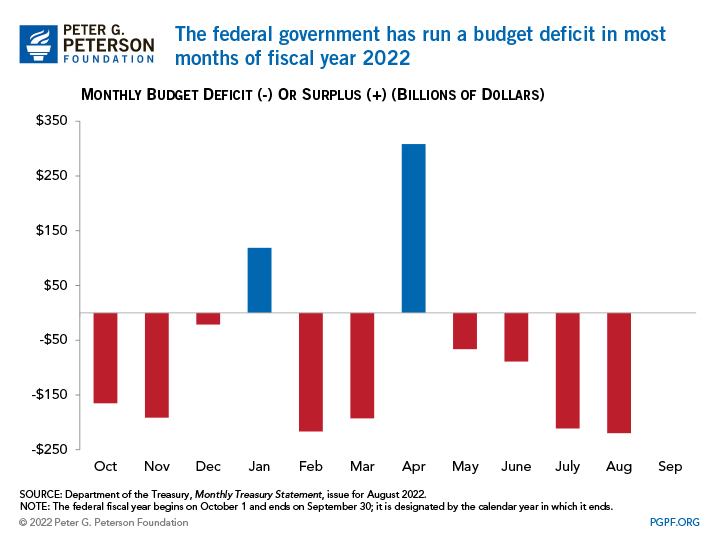
- Federal Budget Deficit for August 2022: $220 billion
- Federal Budget Deficit for August 2021: $171 billion
The federal government ran a deficit of $220 billion in August 2022, $49 billion higher than the deficit of $170 billion that was recorded in August 2021. That increase reflects outlays that were $84 billion higher in August 2022 than they were in the same month last year, partially offset by revenues that were $35 billion higher.
Cumulative Federal Deficit
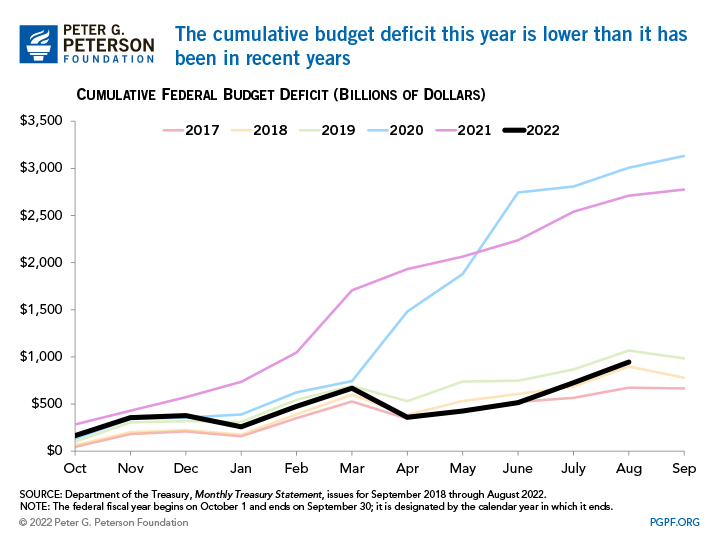
- Cumulative FY22 Deficit Through August 2022: $946 billion
- Cumulative Budget Deficit Over Same Period in FY21: $2,711 billion
The cumulative deficit for the first eleven months of FY22 was $946 billion (or around 65 percent) lower than it was through the first eleven months of FY21, reflecting a $943 billion decrease in outlays and an $822 billion increase in revenues.
The large decrease in outlays results from the waning federal response to the COVID-19 pandemic. The lack of recovery rebates in the first 11 months of FY22, compared to two separate rounds of such payments during the first 11 months of FY21, accounts for a sizeable portion of the decline in outlays.
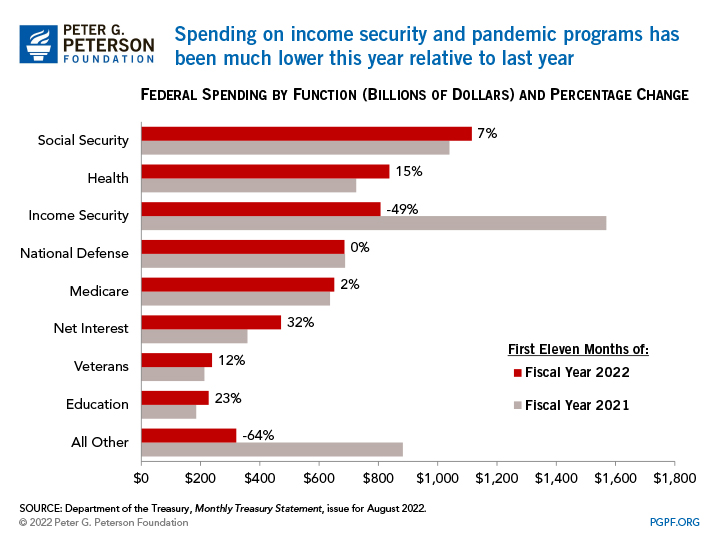
Higher collections of individual income and payroll taxes accounted for 90 percent of the increase in revenues during the first 11 months of FY22. That development is due in part to higher wages and salaries that have led to increased tax withholding, especially among workers with relatively high incomes. In addition, pandemic-related legislation allowed for deferral of certain payroll tax payments into the early months of FY22.
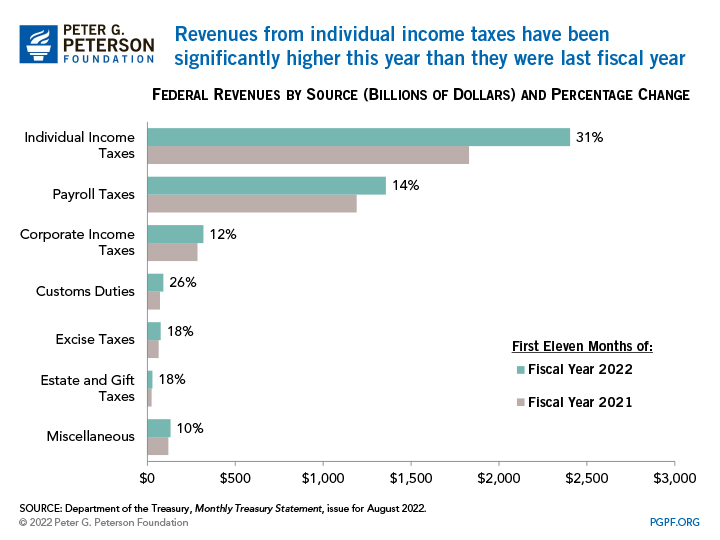
National Debt
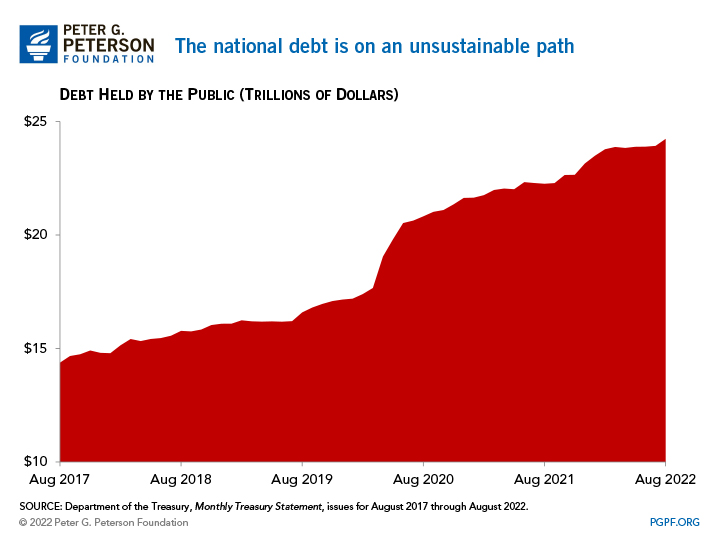
- Debt Held by the Public at the end of August 2022: $24.2 trillion
- Debt Held by the Public at the end of August 2021: $22.3 trillion
Since the onset of the COVID-19 pandemic, debt held by the public has increased by 39 percent, and is projected to grow significantly in the future. Now that the worst of the COVID-19 pandemic is behind us, it is time to chart a comprehensive path to a sustainable fiscal future.
